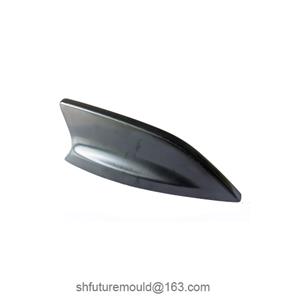5 Critical Steps in PEEK Injection Molding
PEEK (Polyetheretherketone) is a high-performance engineering thermoplastic renowned for its exceptional heat resistance, chemical resistance, and mechanical properties. Given its unique characteristics, PEEK injection molding demands a more precise and specialized process compared to conventional plastics.
1. Material Drying: PEEK is highly hygroscopic and must be thoroughly dried before processing to remove absorbed atmospheric moisture. Drying in an oven for at least 2 hours, with material thickness not exceeding 25mm on trays, is recommended to prevent incomplete drying or contamination. The dried material should have a moisture content of less than 0.02% w/w to avoid issues like blistering and hydrolysis during molding, which can compromise product quality.
2. Equipment Selection and Calibration:
Injection Molding Machine: A modern reciprocating screw injection molding machine with closed-loop control and a microprocessor is ideal. This enables precise control of process parameters to ensure consistent product quality.
Screw Configuration: The screw should be temperature-resistant to at least 400°C and have a low compression ratio (1:1 to 1.3:1) without a check valve. The length-to-diameter ratio (L/D) should be at least 16:1, with 18:1 to 24:1 being preferred. This configuration ensures uniform melting and conveying of the PEEK material.
Temperature Control System Calibration: This includes controlling the barrel, nozzle, and mold temperatures. Barrel temperatures vary based on the PEEK grade, ranging from 360-380°C for unreinforced and 380-400°C for reinforced grades. The nozzle should have a sufficiently large heater to prevent the melt from solidifying below 343°C, causing "cold slugs." The mold surface temperature should be maintained between 175-205°C to ensure consistent part appearance and dimensional stability.
3. Injection Parameters:
Injection Pressure: Typically 70-140 MPa. For complex parts with thick walls, higher pressures may be required to ensure complete mold filling.
Injection Speed: Moderate to high speeds are recommended to fill the mold cavity quickly while avoiding excessive shear stress and internal defects.
Back Pressure: 0-1.0 MPa (0-10 kg/cm²) helps to degas the material and improve part density and quality.
Screw Speed: Generally 50-100 rpm. Lower speeds are recommended for reinforced PEEK to minimize shear and degradation.
4. Injection Process Control: The molding process should be controlled by screw speed and position rather than pressure and time to ensure precise control of injection rate and filling time. Parameters such as injection time, final residue position, and pressure required to reach injection speed should be continuously monitored.
5. Post-Processing:
Cooling: Parts should be cooled in the mold for a suitable duration based on their size, shape, and thickness. Ensure uniform cooling to prevent internal stresses and deformation.
Heat Treatment: Heat treatment can improve crystallinity, increase strength and chemical resistance, reduce residual stress, and minimize dimensional changes at elevated temperatures. The specific temperature and time depend on the PEEK material and part requirements.




